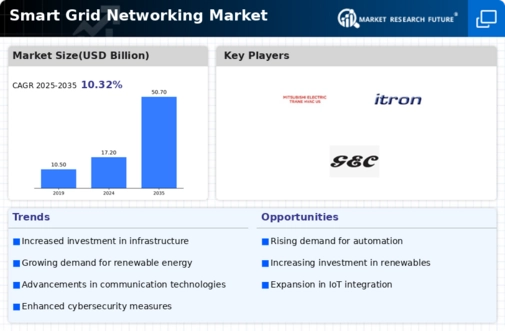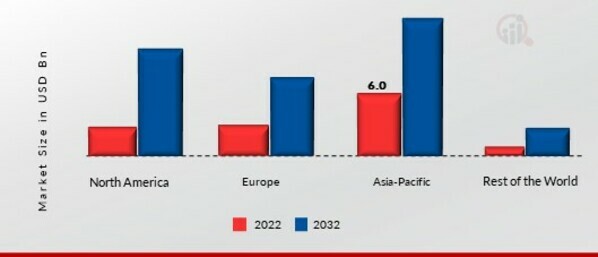Smart Grid Networking Size
Smart Grid Networking Market Growth Projections and Opportunities
Market size and factors that influence its growth as well as direction are truly numerous. The first one is the increasing global demand for efficient energy management solutions. Furthermore, the increased adoption of IoT (Internet of Things) devices has played a significant role in the growth of the smart grid networking market. This link system facilitates real-time monitoring and control of energy delivery by smart meters, sensors, and other connected devices, helping utilities to respond immediately to changes in supply and demand. Apart from enhancing operating efficiencies, this linked system lays the foundation for a more resilient and flexible power grid. Additionally, renewable power sources contribute to growth in the smart grid networking market. When it comes to cleaner energy options across the world, an adaptive and intelligent network is requisite. Smart grids make sustainable power sources workable by effectively managing variations in electricity generation, such as solar or wind power. Besides that, growing understanding and emphasis on energy conservation significantly contribute to the development of the smart grid networking market. End users in both commercial and industrial sectors, including households, are becoming increasingly aware of the benefits derived from employing smart grid technologies aimed at optimizing energy consumption. The utilization of smart meters provides customers with real-time information concerning their electricity use, making them more informed about their usage patterns, thereby saving some via efficient practices. On the contrary, barriers such as high initial costs, together with complex deployment cycles, can hinder the widespread adoption of smart grid networking technology. However, especially for developing countries, the capital-intensive nature of implementing smart grids can be a constraint for many utility companies and governments alike. In addition to that, market regulations and policies play a crucial role in shaping the whole scene related to smart grid networking areas worldwide. All states globally are creating strategies to increase the successful implementation of modernized grids, and this includes grants and subsidies, among other financial incentives targeted towards utilities embracing these initiatives. Another factor influencing the smart grid networking market is the emerging cyber security landscape because Internet-enabled energy infrastructures become more exposed to cyber threats. To ensure strong cyber security measures are in place, it is essential to protect critical infrastructure from potential disruptions and unauthorized access.








Leave a Comment